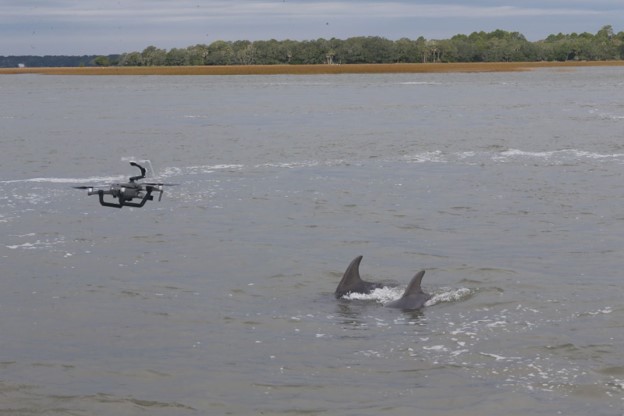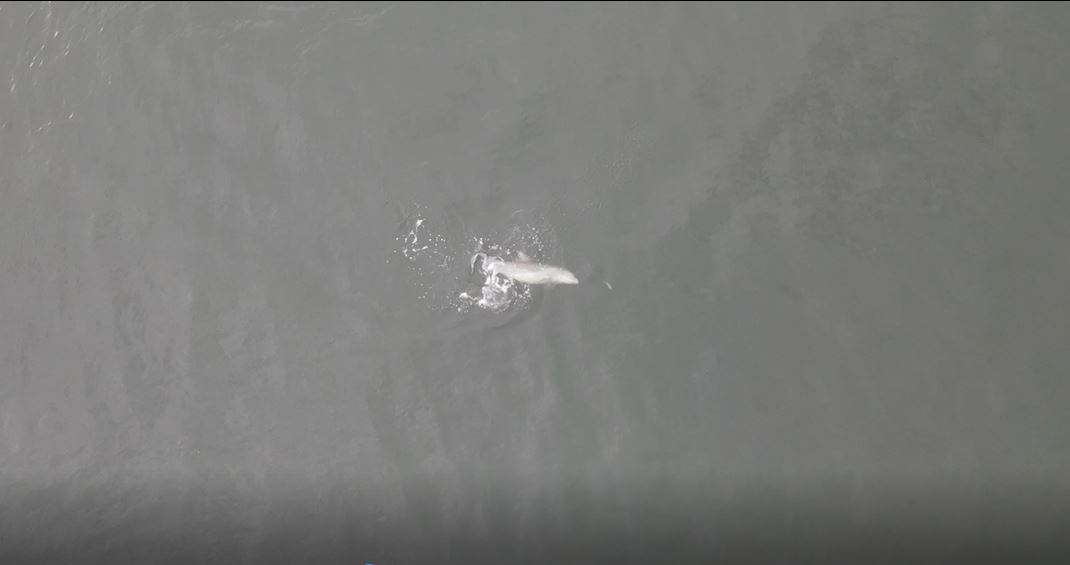
Tamanend’s bottlenose dolphin (Tursiops erebennus) are commonly seen in coastal and estuarine waters of the southeast U.S. However, in the past 20 years, they have been observed moving into waters with low salinity (<15 ppt). This has become a growing problem in estuaries around Charleston, South Carolina, with dolphins often requiring rescue and displaying signs of poor health, such as skin lesions.
College of Charleston graduate students worked with NCCOS scientists to understand this concerning behavior. Using unoccupied aerial systems (UASs) researchers are able to determine the distribution patterns of these dolphins across varying salinities, and collect samples through a non-invasive procedure.
Through UAS technology from land observations in the Cooper River, the team determined dolphins utilized low-salinity (< 15 ppt) habitat during months with warmer water temperatures (May-September). Dolphins are adapted to high saline waters and prolonged exposure to low salinity can lead to negative health effects. Their presence in the low-salinity habitat of the Cooper River may be in response to following prey resources, specifically mullet. As water temperatures continue to rise as a result of climate change, dolphins may start to utilize these areas more frequently, ultimately exposing dolphins to different stressors that may have adverse health implications. This research was recently published in the Special Issue Advances of Drones in Wildlife Research in the Drones journal.

In addition, the team deployed the “SnotBot” UAS–a drone equipped with petri dishes to collect blowhole spray–a technology commonly used on much larger whales, but infrequently and with very limited success on smaller dolphins. This research was the first to employ this method on a small estuarine dolphin population. To the team’s satisfaction, the method resulted in an amazing polymerase chain reaction (PCR) success rate of 73.2 percent. In addition, the UAS also captured still photographs for body condition analysis, known as the body area index (BAI), which is similar to body mass index, or BMI used in humans.
This research has great potential in regularly monitoring dolphin respiratory health for estuarine dolphins that otherwise can only be monitored through expensive and invasive short-term capture-release programs. The next phase of this research is to sequence the microbiome of the existing samples to test for pathogen DNA that affects respiratory health, the leading cause of morbidity/mortality in dolphins. In addition, the team will sample dolphins that enter low-salinity habitat to analyze and compare to the previously collected samples.

